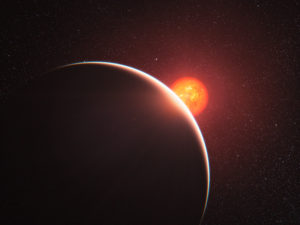Archives
All posts for the month March, 2017
I’m sitting in my hotel room on the morning after the 2017 LPSC Meeting, trying process all the science that washed over me in the past week. And it was a lot, as you can see by checking out the twitter hashtag #lpsc2017.
From the migration of Martian dune ripples to the global seas on Enceladus, there’s no way for me to do it all justice in one blog post. So instead, I’ll talk about one of the talks that stood out most for me.
On the last day of the conference, Dr. Colin Dundas of USGS gave a mic-droppingly good talk in which he argued very convincingly that Mars’ recurring slope lineae are NOT the result of flowing water. This is a big deal for folks who study Mars but might sound a little arcane for non-Martians.
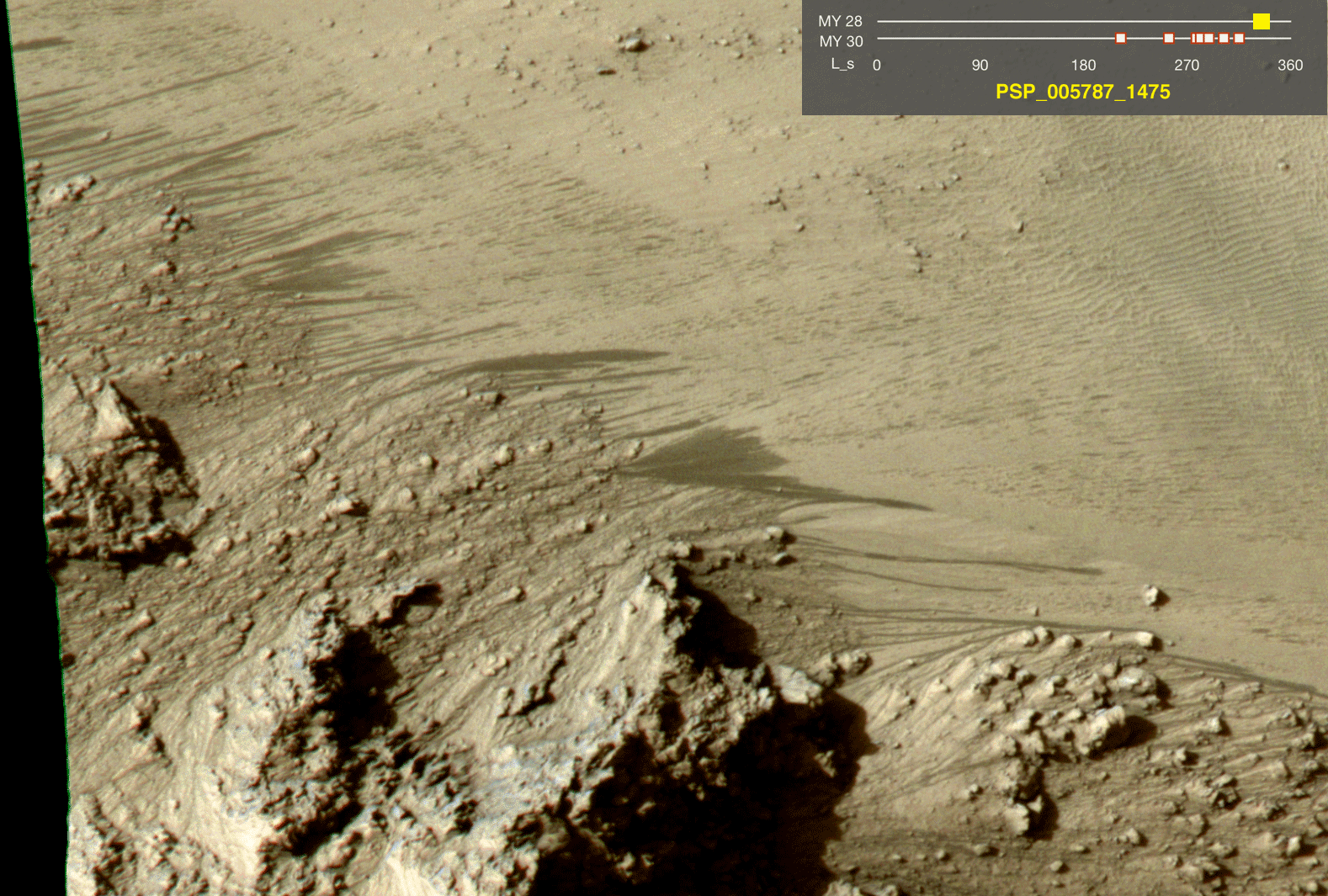 The animated image above consists of several pictures taken by the HiRISE camera onboard the Mars Reconnaissance Orbiter over several months. The very pronounced dark streaks extending out from the cliff face – those are the recurring slope lineae or RSLs. In many locations on Mars, they recur from one year to the next; they always show up on sloped surfaces; and they are long lines. Hence recurring slope lineae.
The animated image above consists of several pictures taken by the HiRISE camera onboard the Mars Reconnaissance Orbiter over several months. The very pronounced dark streaks extending out from the cliff face – those are the recurring slope lineae or RSLs. In many locations on Mars, they recur from one year to the next; they always show up on sloped surfaces; and they are long lines. Hence recurring slope lineae.
Under the current conditions at Mars’ surface, liquid water is not stable over long times, but these dark streaks sure look like small amounts of water running out over the surface, which got people very excited when they were first discovered.
In fact, just a few years ago, some scientists analyzed the spectra of some RSLs and argued they were highly salty brine flows. The salt is important because, even though pure water can’t exist on the surface of Mars, large amounts of salt can stabilize the water, at least for a little while.
This was a huge result, not just because it meant RSLs were small amounts of running water on Mars but because it raised the possibility of much larger sub-surface reservoirs of water. And where there’s lots of water, there could be life.
Well, Dundas’s talk throws all that into doubt. By analyzing the angles of the slopes on which the RSLs occur, Dundas showed that they almost every one of them ended on a slope of about 30 degrees.
Now, if RSLs are flowing water, they should keep flowing, even on small slopes. But if they are some sort of dry granular flow instead, you would expect them to stop once they reached the angle of repose, which is about 30 degrees.
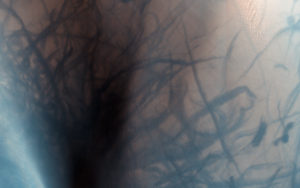
Dark streaks on the sides of Martian dunes seen by HiRISE. These are NOT due to liquid water but resemble in many ways the RSLs.
To bolster his argument, Dundas showed several examples of dry granular flows on Mars that exhibited many of the same properties as RSLs – recurring dark streaks, running along sloped surfaces.
Continued work will either corroborate Dundas’s striking result or circumvent it, and given the number of folks lined up to talk with him after his talk, I’m sure the fans of liquid-flow RSLs will work hard to counter his arguments. And that’s how science progresses – one falsified hypothesis at a time.
Not quite as splashy, I also gave a presentation on our work trying to de-bias dust devil surveys. I’ve posted the presentation below.
All in all, my first LPSC was a great mix of science, warm weather, and warm friends.
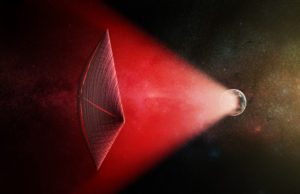
Artist’s illustration of a light-sail powered by a radio beam (red) generated on the surface of a planet. (M. Weiss/Center for Astrophysics)
A fascinating study published last week out of Harvard CfA exploring the possibility that mysterious astronomical radio signals are actually alien spotlights used to accelerate enormous ships sailing on photonic winds.
Since 2007, astronomers have observed about 20 events involving highly energetic bursts of radio waves, either live or in archival data, called fast radio bursts or FRBs. These bursts lasted for only milliseconds. (For reference, it takes a few hundred milliseconds to blink your eye.) In some cases, the bursts were isolated incidents; in others, they consisted of a few bursts separated by seconds or days.
FRB signatures suggest they originate billions of lightyears away, somewhere outside our galaxy. Given these large distances and the fact that we can see them, the radio bursts must come from some enormously powerful source. Explanations for FRBs range from merging black holes or neutron stars to hyperflares from stars with magnetic fields so strong they would blank out the magnetic strip on your credit card at the distance of the Moon. However, as with most strange happenings in astronomy, the most exciting but controversial explanation involves aliens.
In their recent paper, Drs. Lingam and Loeb of Harvard suggest that FRBs are actually beams from enormous alien spotlights used to accelerate football-field-sized spaceships sailing on immense light sails. This idea isn’t as crazy as it sounds. There have been several recent stories about using light sails and lasers to explore the solar system or even other planetary systems.
Lingam and Loeb combine simple but compelling energetic and engineering constraints to explain the mysterious FRBs using their alien spotlight hypothesis.
- Why do FRBs appear and disappear quickly? The spotlights are fixed to the surface of a spinning planet and rotate in and out of view.
- How big and powerful would these spotlights have to be for us to see them from Earth? A little bigger than the Earth and about as bright as the Sun. Such a bright spotlight would probably be very hot, and so to keep it from melting, the aliens would probably have to make it very big to spread out the heat.
- How big would the spotlights have to be not melt from their own heat? Also a little bigger than the Earth.
So, of course, the idea is still highly speculative, but different aspects seem to hang together, forming a coherent picture. Given how frequently FRBs have been seen, Lingam and Lobe estimate there could be something like 10,000 FRB-producing civilizations in a galaxy similar to our own, roughly consistent with some estimates using the Drake Equation.
The authors even suggest we could test their idea that these spotlights are used to accelerate alien sailing ships by looking for the subtle telltales of shadows cast the ships’ sails in the FRBs.
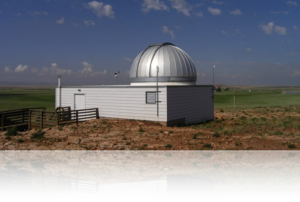
Wyoming’s Red Buttes Observatory
As part of rich tapestry of American astronomy, lots of universities across the US have small but highly serviceable observatories, with histories going back many decades. For instance, Boise State’s own on-campus observatory was installed in the late 70s, and although it’s hardy and still functional, like a lot of these observatories, it lacks capabilities that would allow its use as an active research facility. Such small, older facilities have primarily been used for outreach and teaching, rather than up-to-date research.
In the last few years, tremendous improvements in hardware and software have dramatically reduced the costs and expanded the availability of research-grade instrumentation and computational capabilities. Many of these observatories are now roaring to life and contributing to research efforts at the razor-edge of astronomy – characterizing new exoplanets, contributing to rapid-response gamma-ray burst surveys, among other projects.
However, the process of upgrading these observatories is challenging, as we’ve discovered in trying to refurbish Boise State’s observatory, and there is not a lot of guidance out there about best practices.
Recently, David Kasper of University of Wyoming Physics and Astronomy led an effort to automate Wyoming’s Red Buttes Observatory (RBO), located about 15 miles south of Laramie. Thankfully, he documented their work in a paper published late last year.
The paper provides lots of very specific technical details and even the source code the group used to make RBO a facility capable of supporting undergraduate and graduate research. For instance, RBO’s new weather station determines meteorological conditions at the observatory and posts them, every 60-s, to a public website. Automated monitoring of these conditions allows the observatory itself to decide whether the weather is conducive to observing and even to close up the dome in the case of inclement weather.
The new observatory has collected transit observations of hot Jupiters, a project right up my alley. And so, their work will provide an important roadmap for Boise State’s efforts to renew our observatory. We hope, soon, to see the shadows of distant worlds right from downtown Boise.
—
If you’d like to donate to help with refurbishing our observatory, please visit this website.
Today, we had a visit to the Physics Dept. from an alum’s science class from Fruitland High School. We talked about the physics dept. and astronomy at Boise State, as well as the upcoming eclipse. I posted my presentation below.
Eve Lee and Eugene Chiang of Berkeley Astronomy just posted a very interesting paper about the origins of super-Earths in ultra-short-period orbits.
The topic I’ve been interested in most in recent years is the origin and fate of these ultra-short-period planets. These little guys orbit very close to their host stars, taking, in some cases, only a few hours to circle their host stars. In other words, the year for some of these planets is shorter than a feature-length movie.
Such planets were completely unexpected before astronomers began discovering them, and it’s not at all clear where they came from – naïvely, we’d expect that they can’t form where we find them. And many of them are so small (less massive than the Earth in some cases) that tidal interactions, which can cause bigger planets to death spiral into their stars, probably don’t have much effect.
In their paper, Lee and Chiang explored the origins of short-period super-Earths, planets somewhat, but not much, bigger than Earth. This population declines the closer you get to the host star – there are more super-Earths with periods of several days (short-periods) than of several hours (ultra-short-periods), which probably tells us something about the planets’ origins.
It was thought that such planets might originate via gas disk migration. This is the gravitational give-and-take between a nascent planet and the maternal gas disk from whence it arises.
Lee and Chiang found that, surprisingly, this migration on its own would not have made enough ultra-short-period planets but too many short-period planets. Next, they tried to include tidal interactions, which made enough ultra-short-period planets but too many short-period planets.
Instead, Lee and Chiang found that they could explain the short-period super-Earths if they assumed the planets formed near where we find them (and included a little tidal migration). That’s a little surprising since the standard model of planet formation posits that the grains of dust and ice that eventually coalesce to form planets cannot exist within a few days of their host star.
So, if Lee and Chiang are right, these super-Earths, instead of growing up from tiny grains, may have grown from the collisions of 1000-km planetesimals that themselves migrated close to the host star. In this case, the origins of short-period super-Earths may have been particularly violent.
With 50-plus attendees, Friday’s event was a great success. Lots of great questions and feedback from the audience.
The next event will take place on Friday, Apr 7 at 7:30p with a talk from Prof. Rory Barnes of U Washington.
Dr. Penev was kind enough to share his presentation with me, and I’ve posted it below.
And our Pony Up Campaign finished on Sunday evening. Thanks so much to all our donors, particularly Mat Weaver, Danielle Weaver, Axel & Nancy Kappes, Scott Ki, Rex Hanson, Sonja Ward, and several very generous anonymous donors. Thanks to you all we will be able to pay for seven site visits around the state.
